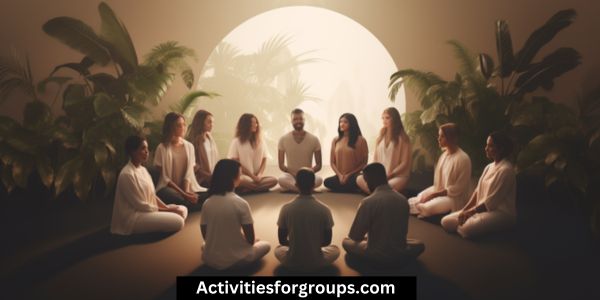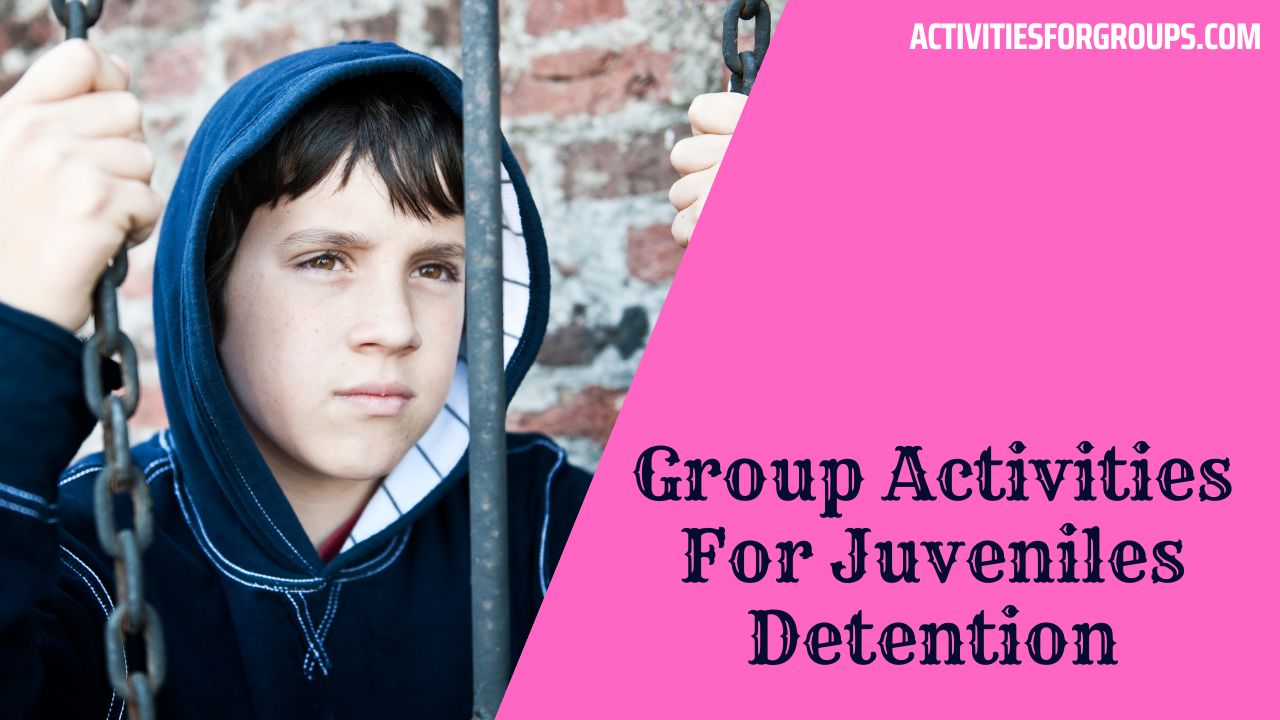Are you looking for a way to bring mindfulness and meditation into your group? You’re in luck! There are plenty of exercises you can do together to practice mindfulness and meditation.

From guided visualization to mindful movement, these exercises will help you and your group focus on the present moment and find inner peace.
Let’s explore the best exercises for group mindfulness and meditation.
Benefits of Group Meditation
By participating in group meditation, you can reap a range of benefits. The practice of mindful eating, relaxation techniques, and other forms of group meditation can help you gain clarity of thought, reduce stress, and improve overall wellbeing. Having a group of like-minded individuals to share in the experience can also help increase motivation and create a sense of community.
Group meditation encourages us to be more aware of our emotions, thoughts, and reactions. It can also help foster a sense of connectedness and understanding with the people we meditate with. As we practice in a group setting, we learn how to be more in tune with our own inner wisdom and the wisdom of those around us.
Group meditation can also be beneficial for those struggling with anxiety and depression. When we practice together, it can be easier to redirect our negative thoughts and feelings, and replace them with positive ones. This can help us to stay focused on the present moment, rather than dwelling on the past or worrying about the future.
Group meditation is also an excellent way to build resilience. By practicing mindfulness and meditation together, we can learn how to pause, reflect, and respond to difficult situations with greater wisdom and clarity. This can help us to become more confident in our ability to cope with life’s challenges.
Guided Visualization
Through guided visualization, you can experience a heightened sense of awareness and relaxation. For group mindfulness and meditation, guided visualization is an excellent exercise. It involves creating a vivid mental image, followed by a period of relaxation. During the visualization, focus on the details of the image and create a sense of presence in the moment. You can also practice mindful eating during the visualization, to bring a greater sense of awareness to the experience.
By engaging in guided visualization, you activate the relaxation response in your body. This reaction is the opposite of the body’s natural ‘fight or flight’ response, which can be triggered by stress. As a result, guided visualization can help to reduce stress, boost your mood and provide a sense of calm.
When practicing guided visualization as a group, it’s important to set the environment by dimming the lights, playing soothing music and ensuring that everyone is comfortable. You can then guide your group through the visualization, focusing on the images, sensations and feelings that you’re experiencing.
Breath-Awareness Practices

With just a few breaths, you and your group can experience the power of breath-awareness practices for mindfulness and meditation. Breath-awareness practices, such as yoga breathing and mindful walking, can help create a sense of calm and relaxation in the group. Yoga breathing involves focusing on the breath and learning to control it, while mindful walking is a practice that encourages the group to be aware of their environment and surroundings. Both practices can help to clear the mind and bring a sense of peace and ease to the group.
When practicing breath-awareness with a group, it’s important to set the intention for the practice. Before beginning, the group can take a few moments to become aware of the breath and to set the intention for the practice. This can be anything from simply deepening the breath to finding a sense of peace and relaxation.
In order to keep the practice focused and effective, it’s important to keep the breath at the center. Encourage the group to focus on the breath and to be aware of the sensations of each inhalation and exhalation. This will help to create a mindful and peaceful atmosphere in the group.
Throughout the practice, it’s important to maintain a sense of presence and to be mindful of the breath. As the practice continues, the group can use the breath to deepen the sense of relaxation and to bring a sense of peace and ease into the group.
Body Scanning
Building on the relaxation created by breath-awareness practices, body scanning is another exercise that can be used to promote mindfulness and meditation in a group setting. This practice involves focusing on each part of the body in turn, starting from the feet and ending at the head. As each body part is scanned, members of the group can be encouraged to breathe deeply and note any sensations, which can help to create a deep sense of relaxation. In addition, the physical effects of body scanning can help to reduce stress and improve overall health and wellbeing.
| Benefits | Relaxation Effects | Stress Management |
|---|---|---|
| Physically | Reduced Tension | Lower Blood Pressure |
| Mentally | Improved Focus | Reduced Anxiety |
| Emotionally | Increased Calmness | Improved Mood |
Mindful Movement

Engaging in mindful movement helps you to become more aware of your body and its movements. Mindful movement is a great way to relax, reduce stress, and foster a sense of well-being. It can be as simple as stretching your arms and legs or taking a few deep breaths.
You can also do more complex movements such as yoga or tai chi. The important thing is that you focus your attention on the physical sensations of the movements. This will help you to become more present in the moment and cultivate a sense of inner peace.
Mindful movement doesn’t require any special equipment or skills, and can be done with a group or alone. It can also be done in any setting, from a park to a workout room. The key is to focus on your body and its movements, and to be conscious of your breathing and the feeling of your body as you move.
Mindful movement is an excellent way to reduce stress, relax your body and mind, and become more mindful of your surroundings.
Frequently Asked Questions [FAQs]
How Often Should I Practice Group Meditation?
Practicing group meditation regularly has many positive benefits. Guidance from a certified teacher can help you determine how often is right for you.
What Is the Best Way to Introduce Group Meditation to a Group of People?
Introduce the benefits of group meditation, like the mind body connection and improved mental health. Explain how connecting with others can support the practice. Then, lead the group through a guided meditation and leave time for questions and feedback.
How Does Group Meditation Differ From Individual Meditation?
Group meditation differs from individual meditation in that it facilitates community building and collective healing. It allows people to share their experiences and better connect with each other.
What Are the Potential Risks of Practicing Group Meditation?
You may experience distractions from others when practicing group meditation. It’s important to set expectations beforehand to ensure everyone is on the same page. Dealing with distractions can be difficult, so be mindful of the environment.
How Do I Know if Group Meditation Is Right for Me?
Ask yourself if mindful breathing and meditation help you reach your personal goals. If so, then group meditation may be a good option for you.
Conclusion
Group mindfulness and meditation can be an incredibly beneficial experience when practiced in a group setting. Guided visualizations, breath-awareness practices, body scanning, and mindful movement can all help to deepen the practice and bring a sense of calm to those who participate.
When done together, these exercises can encourage connection, shared understanding, and a sense of peace.
So gather your friends, family, or colleagues and reap the rewards of group mindfulness and meditation.




Leave a Reply